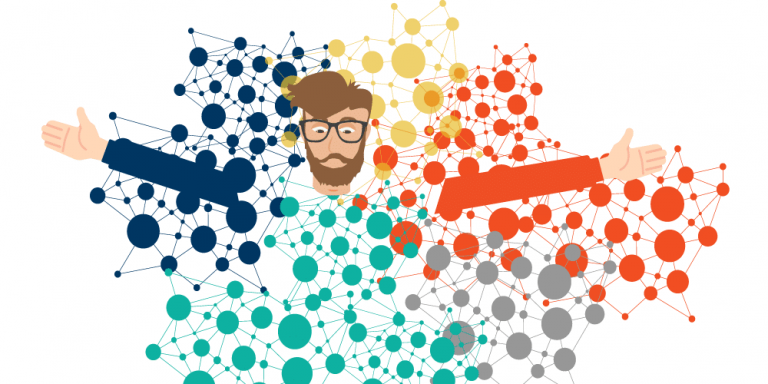This is an excerpt from FinAncIal: Helping Financial Executives Prepare for an Artificial World. Grab your copy here!
This case study covers the leading player in AI-based credit union chatbots. Posh Technologies’ conversational AI includes capabilities for web, SMS, social, mobile, IVR, and home digital assistants, such as Amazon Echo and Google Home.
Stay tuned to the CU 2.0 blog while we feature more excerpts from our financial guide to AI!
Posh Technologies is one of several companies working on conversational AI for commercial applications. Their work currently revolves around automated communication for business processes at financial institutions. Posh Technologies’ NLP capabilities may also save businesses money by speeding up customer service issues. By offloading some of the initial assessment and categorization of customer issues and questions, businesses can reduce their reliance on customer service specialists.
What Kind of Natural Language Processing Does Posh Use?
Posh’s combination of deep and traditional learning methods of understanding language covers a lot of ground, but much of their intellectual property is built on open-sourced deep models. As with most NLP services, Posh extracts meaningful insight, predictions, and relationships in written language. It uses sentiment analysis with predictive analytics to understand the context and purpose of a given text. It also forecasts future interactions like next-best-action marketing practices.
Posh uses another fascinating strategy of extracting relevant information from text: knowledge graphs. Even after 2010, search engines and other tools that parsed written text searched for textual strings. The downside of searching for strings in language is that it necessarily limits the context surrounding the words and phrases contained therein. Knowledge graphs seek to understand more than the words themselves. Instead, knowledge graphs gather information about which words and phrases are frequently associated with each other. As they accumulate language data, they store it in this recognizable graphic pattern.

The graph rapidly builds on itself as new data is introduced. In this manner, knowledge graphs form associations between words, phrases, and other sets of language. Observing the relationships between words offers a richer understanding of language. Data retrieval from the graph is systematic and pulls from related context, which provides a rich understanding of the linguistic data. This ability allows it to better make predictions, anticipate needs, and interpret a wide range of dialects.
What Led Posh to Natural Language Processing?
Before focusing more exclusively on NLP, Posh tried a few strategies. Early efforts were rudimentary, and they needed more data to move forward.
Eventually, Posh found more success with deep neural network-based models. That was when they started seeing the kind of results they wanted. But it wasn’t entirely smooth sailing.
Like humans, machines need exposure to language in order to learn it. One of the largest obstacles to building an AI that can converse competently with humans is amassing enough language data. Simple models require a few hundred conversations to train on, and they need one or two dozen topics to study with. More complex models train on thousands of conversations across hundreds of topics.
Posh needed tons of conversational training data, and they looked everywhere for it. Academic benchmarking datasets were available on the internet, but where Posh found the most success was with Amazon Turk and credit union partnerships. After a few months of crowdsourcing, they moved from standard to more experimental models. The experimental models showed the most promise, and Posh is still working to tune these deep models. So far, they show a 13% boost in accuracy over their competitor benchmarks.
Although Posh’s technology is already in use by financial customers, conversational AI isn’t a solved problem yet. There is a lot of room for improvement in current NLP models. We’re a long way from the universal translators featured in Star Trek—there’s still a lot of “Darmok and Jalad at Tanagra,” if you catch my drift. Nevertheless, the technology is getting surprisingly close!
To advance their AI, Posh draws on research from two highly capable organizations: Open AI and that of the researchers and professors in MIT’s Language Lab, (part of MIT’s AI program). Consequently, Posh brings a mixture of institutional perspectives to their research.
Hindsight Is 20/20
As with most AI uses, Posh Technologies is building a data-hungry platform that requires massive amounts of information for it to succeed. Cutting themselves off from valuable information sources so early on may have delayed their success.
There were a few things that Posh acknowledges they should have pursued earlier: more ambitious research experiments, early focus on a domain, and keeping up with open source advances. Despite Posh’s academic pedigree—they started as researchers in MIT’s AI Language Lab—they didn’t initially realize the importance of pursuing bold internal research experiments and the impact that would have on their AI success.
The fear of competition kept them insulated from some of their peers, too. They missed valuable early networking opportunities with other experts in their field. By staying siloed early on, they could have secured a deeper understanding of the broad industry. After working with others, they’ve seen the value in sharing knowledge and tapping into the broader open source community. Today, Posh celebrates the open source movement for a freer, more democratic approach to innovation. Furthermore, with a more collaborative strategy—especially with industry partners, customers, and peers—Posh builds community and increase their credibility.
Next Steps for Posh Technologies
Posh has used mostly supervised machine learning to get where they are. Although supervised machine learning is an incredibly powerful tool, it requires significant human input. And it doesn’t just call for mountains of data—it needs annotated data, which is notoriously hard to come by.
Recently, Posh has been moving toward a hybrid approach, where unsupervised machine learning presents a huge opportunity. Unsupervised learning would allow their computers to develop their own rules and understandings of trends, patterns, and categories. More importantly, it would eliminate Posh’s reliance on annotated data.
Learning More About AI in Credit Unions
Kirk Drake’s new book, FinAncIal: Helping Financial Executives Prepare for an Artificial World, explores the world of AI in the financial industry. It covers AI history, modern financial use cases, and a guide to introducing AI into your credit union or community bank.
This case study for Posh Technologies provides a good look into the kind of investigating we did in writing. We’re thrilled to showcase fintechs making big changes in the way we live and bank every day.
Get your copy today to see how AI will transform your credit union tomorrow!




